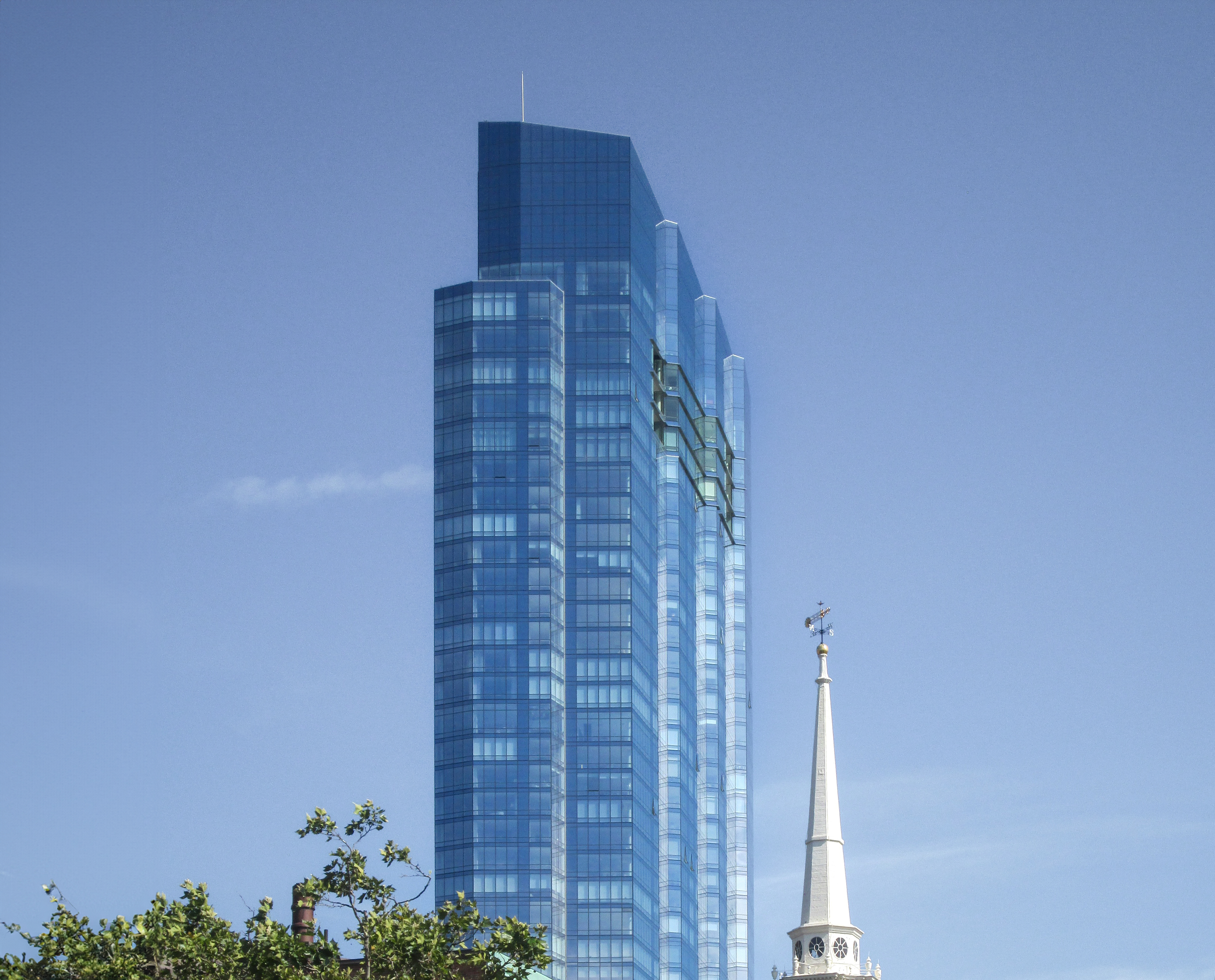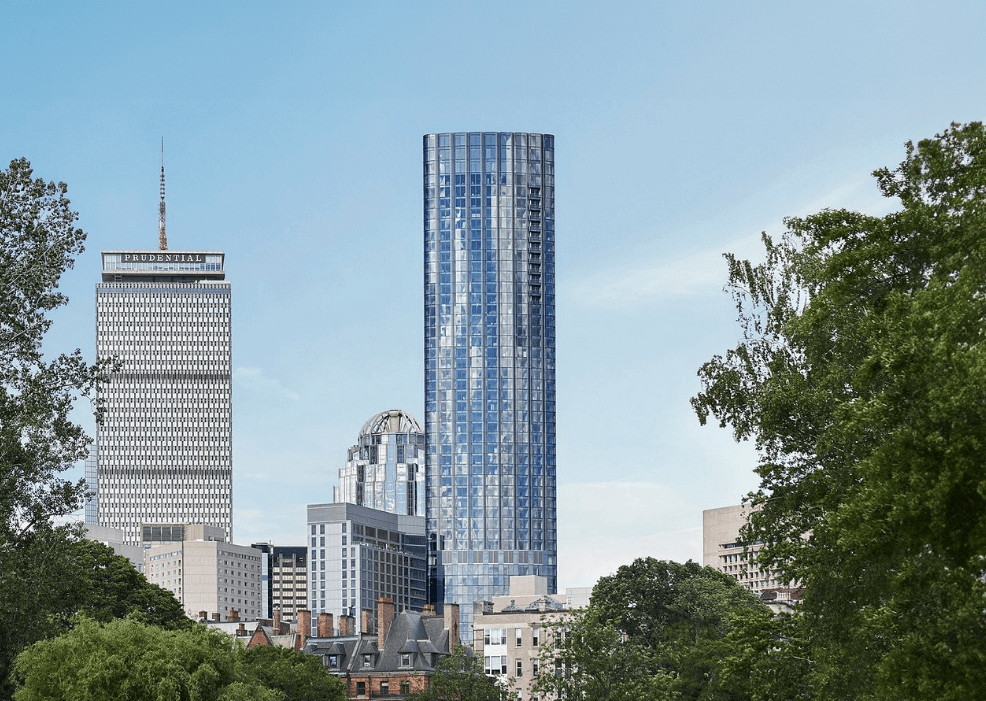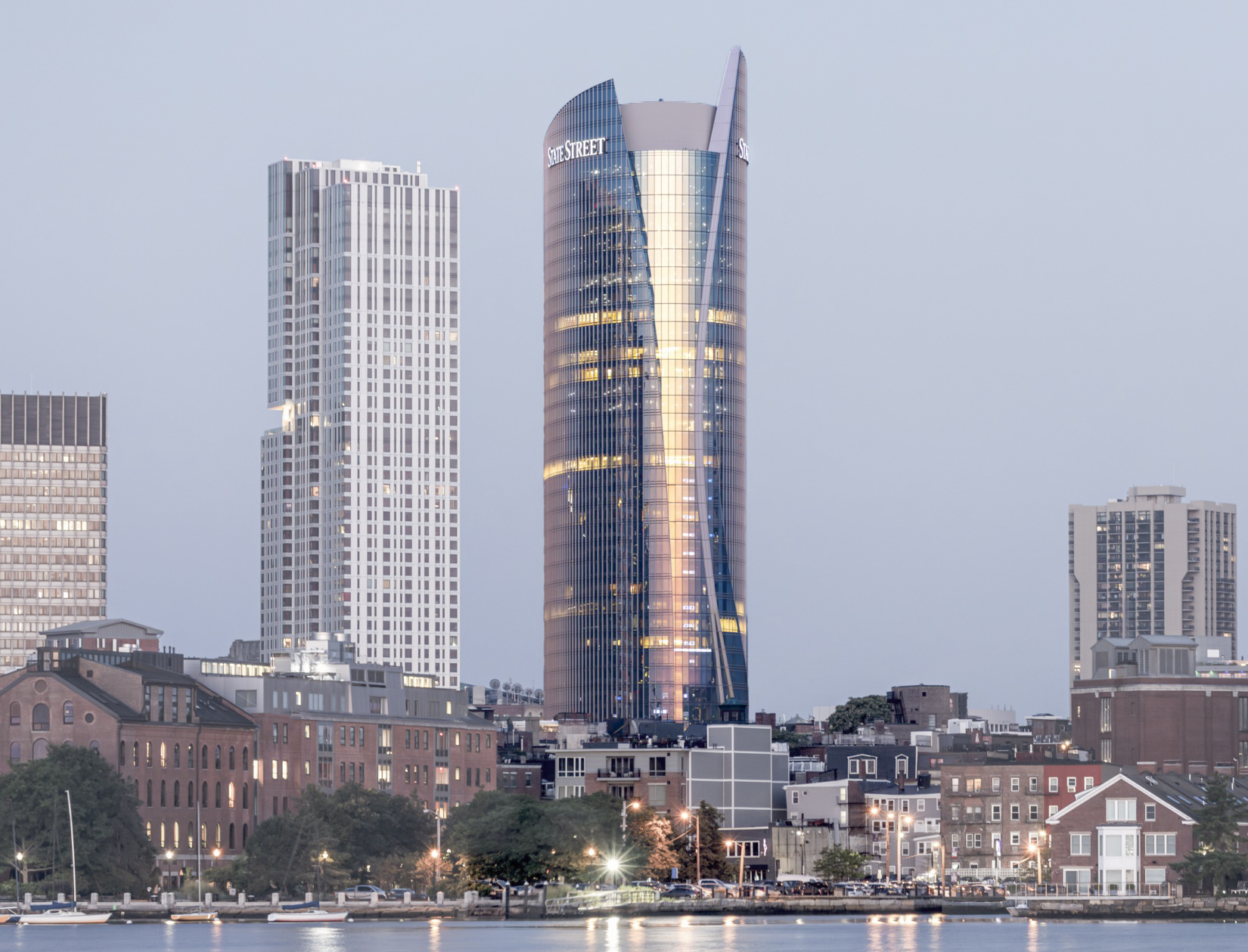The Millennium Tower is a Contemporary skyscraper designed between 2012 and 2013 by Handel Architects, with Blake Middleton as lead architect, and built between 2013 and 2016, for a reported $375 million dollars, in Boston, MA.
Millennium Tower is not the only name you might know this building by though. The building is, or has also been known as One Franklin.
Its precise street address is 1 Franklin Street, Boston, MA. You can also find it on the map here.
In 2018 the Millennium Tower was awarded with the Concrete Reinforcing Steel Institute (CRSI) Honors Award.
The semi-silver facade of Millennium Tower contrasts with the context of stone and masonry. The facets of the tower were utilized to provide more of the residences with views to the south and west, overlooking The Common park.









